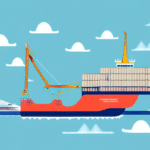Understanding FOB Shipping Point in International Trade
If you are engaged in importing or exporting goods, you may have come across the term FOB Shipping Point. But what exactly does it mean, and why is it important to your business? In this article, we'll explore these questions and more, providing you with a comprehensive understanding of FOB Shipping Point.
The Evolution and Significance of FOB Shipping Point
FOB stands for Free On Board, a term that originated in the United States in the early 1900s. It signifies that the seller is responsible for the shipment until it is loaded onto the carrier. At that point, the buyer assumes all risks and responsibilities for the goods. Today, FOB Shipping Point is a standard commercial term used in international trade for both air and sea shipments.
Understanding where the risk and responsibility transfer from the seller to the buyer is crucial for businesses, as it directly affects the cost and risk associated with transporting goods. Clearly defining these terms in contracts ensures that both parties agree on the point of transfer, minimizing potential disputes.
Comparison with Other Commercial Terms
FOB Shipping Point is one of several Incoterms used in international trade. Other common terms include:
- FOB Destination: Responsibility transfers when goods reach the buyer's location.
- CIF (Cost, Insurance, and Freight): Seller covers costs, insurance, and freight to the destination port.
- EXW (Ex Works): Buyer bears all costs and risks from the seller's premises.
Each term defines a different point of risk and cost transfer, making it essential for businesses to choose the one that best aligns with their logistical and financial strategies.
Legal Implications of FOB Shipping Point
One of the most critical aspects of FOB Shipping Point is its legal implications. When goods are loaded onto the carrier, ownership and risk transfer to the buyer. This means that if goods are lost or damaged during transit, the buyer is responsible for filing claims, not the seller.
Revenue Recognition
Under FOB Shipping Point, sellers can recognize revenue once the goods are loaded onto the carrier, even if they haven't been delivered yet. This is because the ownership has already transferred to the buyer, impacting the company's financial statements and cash flow management.
Scope of Application
It's important to note that FOB Shipping Point applies exclusively to the shipment of physical goods, not services. Services have different mechanisms for transfer of ownership and risk, which are typically outlined separately in contracts.
Impact on Business Operations and Financials
FOB Shipping Point can significantly influence a business's bottom line in international trade. When buyers assume responsibility for transportation costs and risks from the shipping point, sellers can reduce their expenses related to shipping. This can be particularly advantageous for sellers looking to streamline their logistics and focus on production.
Cost and Risk Management
For buyers, understanding that they bear the cost and risk from the shipping point allows for better budgeting and risk mitigation strategies. Calculating potential risks, such as damage during transit, helps in pricing goods appropriately and ensuring adequate insurance coverage.
Accounting Considerations
The timing of revenue recognition under FOB Shipping Point can impact financial reporting. Sellers recognize revenue upon shipment, which can improve cash flow but requires accurate tracking of inventory and sales records.
FOB Shipping Point vs. FOB Destination
While FOB Shipping Point transfers responsibility at the shipping origin, FOB Destination means that responsibility transfers upon arrival at the buyer's location. The choice between these terms affects who bears the cost and risk at different stages of the shipment.
Key Differences
- FOB Shipping Point: Buyer assumes risk once goods are shipped.
- FOB Destination: Seller retains risk until goods reach the buyer's location.
Selecting the appropriate term depends on factors such as the reliability of the carrier, the nature of the goods, and the bargaining power of each party in the transaction.
Common Misconceptions About FOB Shipping Point
Several misconceptions can lead to confusion around FOB Shipping Point:
- Misconception 1: FOB Shipping Point means shipping is free. Reality: It refers to the transfer of responsibility, not the cost of shipping.
- Misconception 2: It only applies to sea transport. Reality: FOB Shipping Point is applicable to air, sea, and land transport modes.
Advantages and Disadvantages of FOB Shipping Point
Like any term, FOB Shipping Point comes with its own set of advantages and disadvantages:
- Advantages:
- Reduces seller's shipping expenses.
- Streamlines the transfer of ownership and risk.
- Simplifies contractual agreements.
- Disadvantages:
- Buyer must manage and bear shipping risks.
- Potential for disputes if terms are not clearly defined.
- Requires buyers to have robust logistics capabilities.
Calculating Costs and Risks with FOB Shipping Point
When engaging in a transaction under FOB Shipping Point, it's essential to accurately calculate the associated costs and risks:
- Determine Responsibility: Clarify that the buyer is responsible for shipping costs and risks from the shipping point.
- Assess Shipping Costs: Include transportation, insurance, and any potential tariffs or taxes in the buyer's cost calculations.
- Evaluate Risks: Consider factors like transit time, carrier reliability, and the nature of the goods to assess the likelihood of damage or loss.
Implementing strategies such as purchasing insurance can help mitigate these risks.
Negotiating FOB Shipping Point Terms
Effective negotiation of FOB Shipping Point terms involves several key considerations:
- Clear Definition of Shipping Point: Specify the exact location where responsibility transfers.
- Delivery Terms: Agree on delivery dates and any penalties for delays.
- Carrier Selection: Choose reliable carriers to minimize risks during transit.
Ensuring that both parties have a mutual understanding of these terms can prevent misunderstandings and streamline the transaction process.
Best Practices for Managing FOB Shipping Point Logistics
To successfully manage logistics under FOB Shipping Point, businesses should adhere to the following best practices:
- Choose Reliable Carriers: Partner with carriers known for punctuality and careful handling of goods.
- Proper Packaging and Labeling: Ensure goods are securely packed and correctly labeled to prevent damage and facilitate handling.
- Clear Communication: Maintain open lines of communication between buyer and seller regarding shipment details.
- Contingency Planning: Develop plans for unexpected delays or issues during transit.
- Accurate Documentation: Keep detailed records of all transactions, shipping documents, and communications to support any potential claims.
Case Studies: Successful Implementation of FOB Shipping Point
Numerous businesses have leveraged FOB Shipping Point to enhance their international trade operations:
Case Study 1: Chinese Clothing Manufacturer
A clothing manufacturer in China adopted FOB Shipping Point to reduce costs and expedite delivery times. By transferring shipping responsibilities to their US buyers at the shipping point, they minimized transportation expenses and utilized faster carriers, resulting in improved delivery performance and customer satisfaction.
Case Study 2: US-Based Electronics Manufacturer
A US electronics manufacturer used FOB Shipping Point to mitigate the risk of damage during transit. By ensuring proper packaging and transferring responsibility at the shipping point, they reduced the incidence of product damage and maintained high quality upon arrival, enhancing their reputation and customer trust.
Future Trends in FOB Shipping Point and International Trade
The landscape of international trade is continually evolving, and FOB Shipping Point will adapt to these changes. Emerging trends include:
- Technology Integration: Utilizing blockchain for secure and transparent transactions, reducing the risk of fraud and enhancing traceability.
- Combination with Other Incoterms: Integrating FOB Shipping Point with terms like CPT (Carriage Paid To) or CIF to cover more comprehensive aspects of shipping costs and risks.
- Sustainability Practices: Incorporating eco-friendly shipping practices and materials to meet growing environmental standards.
Staying abreast of these trends will help businesses optimize their use of FOB Shipping Point in international trade.
Conclusion
FOB Shipping Point is a fundamental term in international trade, delineating where the responsibility and risk of goods transfer from the seller to the buyer. Understanding its legal implications, impact on business operations, and effective management practices can significantly enhance a company's international trade efficiency and financial performance. By adhering to best practices and staying informed about evolving trends, businesses can leverage FOB Shipping Point to facilitate successful and cost-effective global transactions.






















